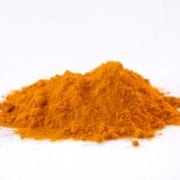Understanding The Ketogenic Diet
The ketogenic (“keto”) diet is a high fat, moderate protein, and low to very low carb diet.
Its composition challenges what the nutrition industry has promoted as healthy eating over the last century. Despite this, it has become one of the most popular diets of the moment.
However, the Ketogenic diet should not be considered just a fad diet – it has been prescribed by physicians and nutritionists for nearly a century.
Conditions that benefit from a ketogenic diet
Patients who have tried the ketogenic diet have reported improvements in overall health including weight loss, increased energy levels, heightened mental clarity, and success in stabilizing insulin levels. Clinicians have also seen great results with modified keto diets as an adjunct treatment for the following conditions:
- MOST INFLAMMATORY CONDITIONS. By adopting a high-fat ketogenic diet and limiting carbohydrate intake, you will reduce the overload of reactive oxygen species produced while burning glucose which exacerbates inflammation.
- INSULIN RESISTANCE. Inflammation resulting from sugar toxicity is most of the time accompanied by insulin resistance. Insulin resistance is among the leading causes of type 2 diabetes and cognitive decline and is a serious problem in the U.S. and around the world. By adopting a ketogenic approach, the body relies on ketones for energy production, which improves glycemic control and has shown to reduce the dependency on diabetes medications and may even completely reverse it.
- WEIGHT LOSS. Several research studies are proving the benefits of a high-fat ketogenic diet for weight loss, especially for obese people, as it accesses the body fat for energy production.
- LOWERING THE RISK OF CANCER. All body cells can use both glucose and ketones for energy production and optimal functioning, except cancer cells. They only rely on glucose for survival and do not have the flexibility to adapt to ketones, which causes them to starve and die when the person adopts a ketogenic diet.
- PREVENTING & REVERSING COGNITIVE DECLINE. Adopting one specific variation of the ketogenic diet known as “RECODE” protocol or “Ketoflex 12/3”, the body can restore proper brain growth and reduce neuroinflammation, increase insulin sensitivity, and excrete toxins. With close monitoring and lifestyle changes, these benefits will improve mild cognitive decline and early Alzheimer’s. This variation was developed by Dr. Dale Bredesen, an internationally recognized expert in the study of neurodegenerative diseases such as Alzheimer’s disease. (More about how the ketogenic diet benefits the brain below.)
Questions? Give Us a Call!
So why the popularity now?
One could say in part that it’s a social phenomenon; thanks to a few celebrity endorsements and tweets, social media has thrust this diet in the spotlight. But more importantly, recent revelations about how Big Sugar has influenced our models of proper nutrition, along with the steady increase in chronic illness rates in the United States, have prompted us to rethink the hierarchy of the foods we choose to put on our plates.
Sugar consumption in the U.S.
The World Health Organization (WHO) and the American Heart Association (AHA) recommend that adults should ideally consume 25 grams of sugar/day, and no more than 50 grams to avoid sugar toxicity. This translates to approximately 5-10% of daily caloric intake. But CDC statistics show that on average men and women in the United States consume approximately 13% of their daily calories from added sugars, and unfortunately that percentage increases to 16% for children.
Soft drinks are the leading source of added sugar in the American diet and can deliver a whopping 30+ grams in just one 12-ounce can. Pastries like cakes, cookies, and donuts have become staples in the American diet and sit at the top of that list as well, but much of the sugars we consume are hidden away in the carbs we love to eat, like bread (even the “healthy” ones), granola bars, flavored yogurts, condiments, and dressings.
Carbs vs fat
When you eat a meal high in carbohydrates, the body burns glucose, a form of sugar, as the main source of energy for both muscle and brain activity. It is the simplest molecule to convert and is immediately available and metabolized when needed. Excess glucose gets stored in the liver and muscles as glycogen. But the human body was not designed to process large amounts of sugar so when those stores are filled, excess glycogen then gets stored as unhealthy fat around the body’s tissues and organs.
But unwanted body fat is not the only consequence of a high-carb diet. There is an increasing body of evidence that confirms excessive sugar consumption is tantamount to poison and is directly related to the increasing prevalence of metabolic disorders like diabetes, obesity, and cardiovascular disease.
When your body burns glucose for energy it creates toxic byproducts called reactive oxygen species (ROS). ROS are harmful free radicals that can damage brain cells and DNA when they overwhelm antioxidant levels in the body. The result is oxidative stress (OS). OS is a major contributing factor to widespread inflammation present in metabolic disorders as well as cancer, arthritis, chronic pain, and cognitive decline.
In comparison, minimizing carbohydrate intake forces the body to rely on dietary and stored fat, not glucose, as a primary fuel source, and this is the basic premise of the ketogenic diet. By severely restricting the daily intake of carbohydrates to approximately 20-50 grams, glucose levels are kept in short supply and the body is forced to find an alternative energy source. The ketogenic diet essentially puts the body into “starvation mode” and forces the body into a state of ketosis. In this state, fat molecules are broken down by the liver and are converted into what are called ketone bodies, made up of acetone, acetoacetate (AcAc), and beta-hydroxybutyrate (BHB). Ketone bodies travel through the bloodstream and are utilized by all the healthy cells in the body and brain.
The ratio of carbohydrates to fats changes depending on the condition you are adopting the ketogenic diet for. In most cases, carbohydrate intake varies between 5% and 10% of total caloric intake, and fats represent 70%-80%. However, protein intake should be in a moderate amount as excessive protein intake promotes gluconeogenesis, converting protein to glucose for energy. Ideal protein intake on a ketogenic diet is approximately 0.8 – 1 gram per kilogram of body weight, representing 20%-25% of total caloric intake.
How the ketogenic diet benefits the brain
The ketogenic diet was originally developed in the 1920s as a treatment to help control epileptic seizures in children and is still used as such by some physicians. Since then, and particularly over the last 20 years scientists have looked into the diet as a possible intervention for other neurological conditions. Studies show that the ketone bodies created during ketosis have neuroprotective benefits, which include:
- Ketone bodies burn more efficiently than glucose and have the ability to deliver more energy to brain cells per unit of oxygen consumed compared to glucose. As the brain uses more energy than any other organ in our body, this is particularly important, especially for the aging brain.
- Ketone bodies lower the production of free radicals which in turn will help keep inflammation levels down in the body.
- Ketone bodies help keep the ratio of GABA/Glutamate in balance. Glutamate is a neurotransmitter that helps with brain function. When glutamate levels are elevated it can cause cell damage. GABA (gamma-aminobutyric acid) is responsible for “quieting down” heightened neuronal activity.
What about fasting?
Food availability, prolonged exposure to screens, and artificial light are a few of the modern-day amenities that have contributed to the disruption of our internal clocks resulting in extended awake time and feeding times. In the body, this can translate to an imbalance in hormone secretion, cellular repair, and digestion. Insulin is the perfect illustration; every time we eat we produce the hormone insulin to control the glucose surge from the foods we consume, and the more we eat, the more insulin is pumped into the bloodstream leading to an avalanche of chemical reactions that contribute to insulin resistance and other metabolic diseases we are seeing today.
A recommendation many ketogenic diet proponents give their patients is intermittent fasting (IF). Alternating normal daily caloric intake with a period of fasting promotes health by:
- Stabilizing insulin secretion – When we abstain from food for several hours, insulin levels go back to normal;
- Promoting autophagy – Autophagy is an important cell recycling process that helps clean our bodies of damaged or dysfunctional protein components and mitochondrial waste. This process is crucial for the regeneration of cells – including brain cells;
- Fasting also drains the liver of its glycogen stores for use as energy. Remember, glycogen is the stored form of glucose. This means accessing the glycogen that the body has been accumulating. Once you use all the stored glycogen, the body is already in fat-burning mode; and,
- Promoting ketosis – Fasting and the ketogenic diet work hand in hand to activate the ketosis process. When you fast, your body will use whatever is available as a source of fuel, and because you’re already restricting carbohydrate intake, the body instantly shifts to using ketones.
Questions? Give Us a Call!
What to eat and avoid on a ketogenic diet
There are plenty of food options for someone on a ketogenic diet. Here are some “yes” and “no” foods to keep in mind. This is not a complete list so talk to your physician for more detailed information on foods that should be included or should be avoided before you start!
- “YES” FOODS
- Fish/Seafood (fatty fish like salmon, mackerel, sardines – wild-caught is best)
- Meat (grass-fed is best)
- Poultry (grass-fed is best)
- All non-starchy vegetables (examples: avocado, asparagus, Brussels sprouts, broccoli, cabbage, celery, eggplant, cucumber, bell pepper, kale, okra, summer squash, spaghetti squash, tomatoes)
- “Good for you” oils (olive oil, coconut oil)
- Some dairy (cottage cheese, unsweetened yogurt, butter)
- Eggs
- Nuts, in moderation
- coffee & tea (unsweetened of course!).
- “NO” FOODS
- All grains
- All types of sweeteners (agave, maple syrup, sugar, honey, etc…)
- Candies/pasteries
- Starchy vegetables (like potatoes, parsnips, or corn)
- Alcoholic beverages
- Fruits
- Pasta
- Most legumes
- Sodas
It may not be for everyone…
Starting a new diet plan can be difficult under any circumstances, and particularly when drastic changes are made. Although researchers and clinicians have demonstrated that a ketogenic diet can benefit multiple health conditions and can have a positive influence on overall health, we don’t advise undertaking a ketogenic diet without the guidance of a Dietitian Nutritionist or physician. Under proper supervision, the initial transition can be closely monitored in order to catch any changes or symptoms that may arise.
A ketogenic diet may not be a good choice under the following conditions:
- Pregnant women
- Breastfeeding women
- Naturally thin physique
- Pancreatic Insufficiency (needs monitoring)
- Gallbladder removed (needs monitoring)
- History of kidney stones
- Have an eating disorder, especially Anorexia
- Children and adolescents still growing
In sum, excessive sugar consumption and sedentary lifestyles have had an enormous influence on the health decline in the United States. The ketogenic diet, which focuses on unprocessed foods that naturally lower inflammation, combined with lifestyle modifications and monitoring, can reverse and improve a number of inflammatory illnesses like diabetes, obesity, cardiovascular problems, cancer, arthritis, chronic pain, and depression.
If you would like to meet with a Kaplan Center physician or dietitian to learn more about the ketogenic diet – or to find the ideal diet for your optimal health – please call 703-532-4892 for an appointment or use this contact form to send us a message.
We are here for you, and we want to help.
Our goal is to return you to optimal health as soon as possible. To schedule an appointment please call: 703-532-4892 x2






